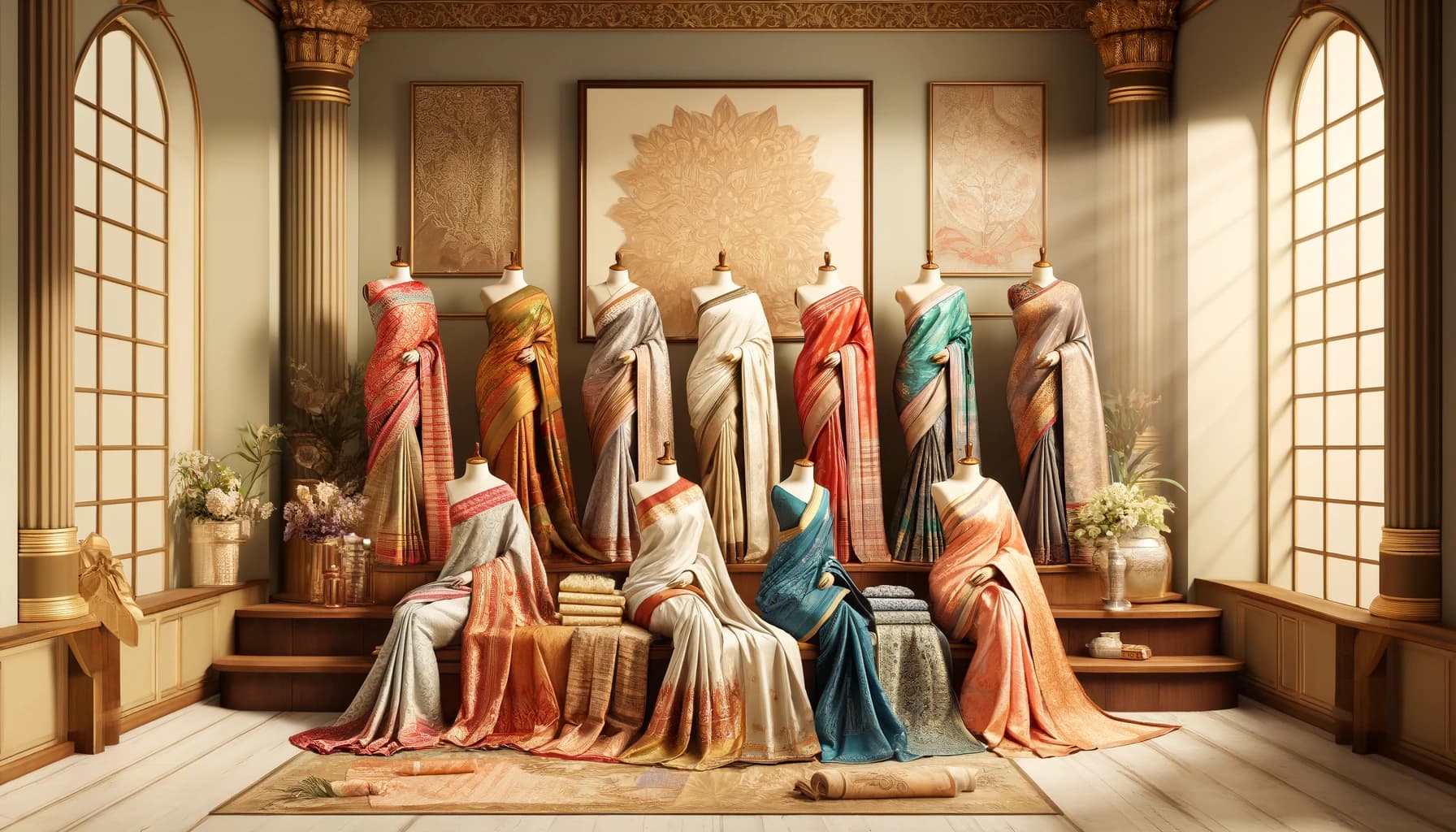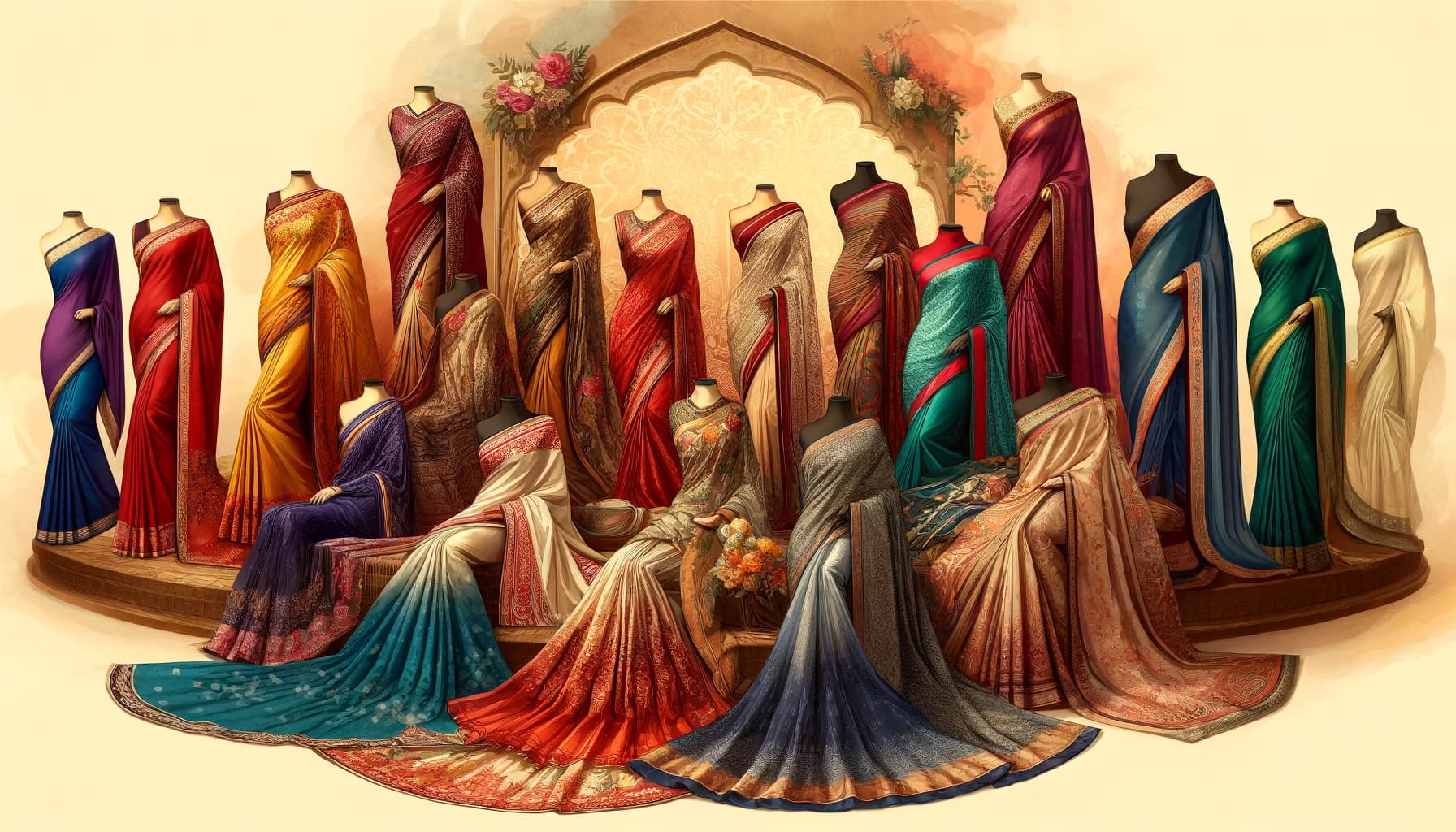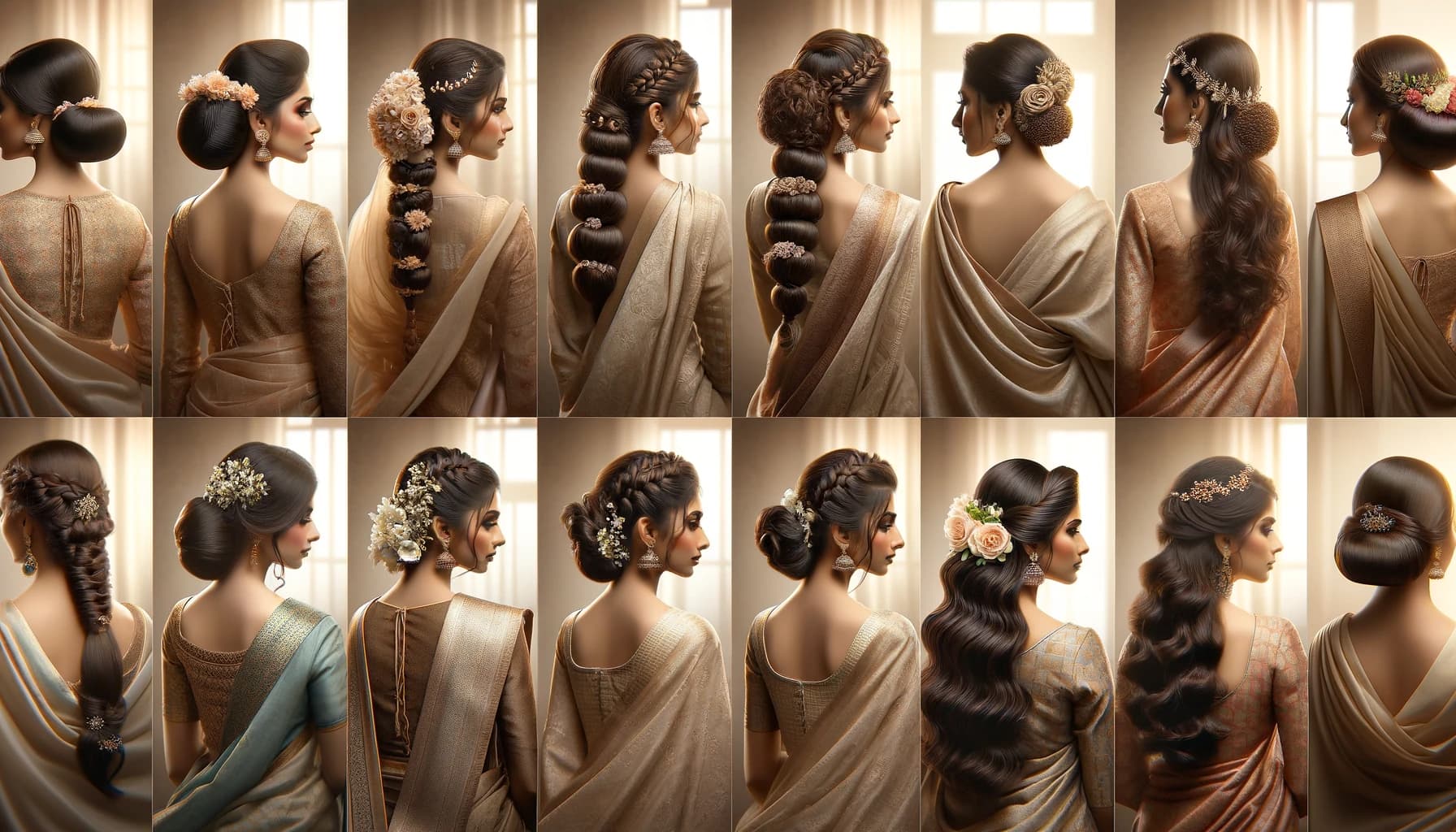
Discover the Rich Variety of Silk Sarees: A Comprehensive Guide
Introduction
Silk sarees are more than just an attire; they are a cherished heritage passed down through generations and a symbol of elegance and tradition in India. This guide explores the different types of silk sarees, each with its unique weave, design, and regional identity. Whether you are a saree connoisseur or a new enthusiast, understanding these varieties will enhance your appreciation and help you make informed choices.
Types of Silk Sarees
#1. Banarasi Silk Saree
Banarasi silk sarees originate from Varanasi, a city renowned for its weaving since the ancient times. Known for their gold and silver brocade or zari, fine silk and opulent embroidery, these sarees are popular for weddings and formal occasions. The intricate motifs of floral and foliate designs, kalga and bel, are typical of Banarasi sarees.
#2. Kanjeevaram Silk Saree
Hailing from the Kanchipuram region in Tamil Nadu, Kanjeevaram silk sarees are woven from pure mulberry silk. These sarees are distinguished by their wide contrast borders and are characterized by their vibrant colors and high durability. The designs include traditional motifs like temples, palaces, and paintings from Indian mythology.
#3. Tussar Silk Saree
Tussar silk, also known as 'Wild Silk', is a specialty of India that has a rich texture and natural deep gold color. It is valued for its purity and the ethical means of its production that supports many rural communities. The sarees often feature tribal art and motifs inspired by nature.
#4. Mysore Silk Saree
Originating from Mysore, Karnataka, these sarees are known for their minimalistic design and vibrant colors. Made from pure silk, Mysore silk sarees have a smooth texture with subtle designs, making them ideal for both formal and casual occasions.
#5. Assam Silk Saree
Assam silk, comprising varieties like Muga, Eri, and Pat, is known for its resilience and glossy texture. Muga silk, which has a natural golden tint, is particularly famous for its durability and its shimmering, glossy texture.
#6. Patola Silk Saree
Made in Patan, Gujarat, Patola sarees are known for their colorful diversity and geometric patterns. These double ikat sarees are dyed using a complex method, making them a symbol of affluence and social status.
#7. Bhagalpuri Silk Saree
Often referred to as the 'Queen of Silk', Bhagalpuri silk sarees are made in the Bhagalpur area of Bihar, known for its unique and striking resilience. They are popular for their zari and embroidery work which showcases contemporary patterns and prints.
FAQs
What determines the quality of a silk saree?
The quality of a silk saree is determined by its weave, the purity of the silk, and the intricacy of its designs. Higher thread counts in weaves generally indicate better quality.
How should I maintain my silk sarees?
Silk sarees should be dry-cleaned and stored away from direct sunlight. Use soft muslin cloth for wrapping the saree to protect it from moisture and dust.
Can silk sarees be worn for casual occasions?
Yes, lighter silk sarees like Tussar and Mysore silk can be styled for casual events. Their understated elegance makes them suitable for various occasions.
Are there any eco-friendly silk sarees?
Yes, Ahimsa silk, also known as peace silk, is produced without harming the silk worms, providing an eco-friendly option for environmentally conscious consumers.
Conclusion
Silk sarees represent a beautiful amalgamation of cultural richness and contemporary style. Understanding the different types of silk sarees will help you choose the right one that matches your occasion, style preference, and budget. Whether it's the opulent Banarasi silk for a wedding or the understated elegance of Mysore silk for a corporate event, each type has its own story and charm.



Leave a comment
This site is protected by hCaptcha and the hCaptcha Privacy Policy and Terms of Service apply.